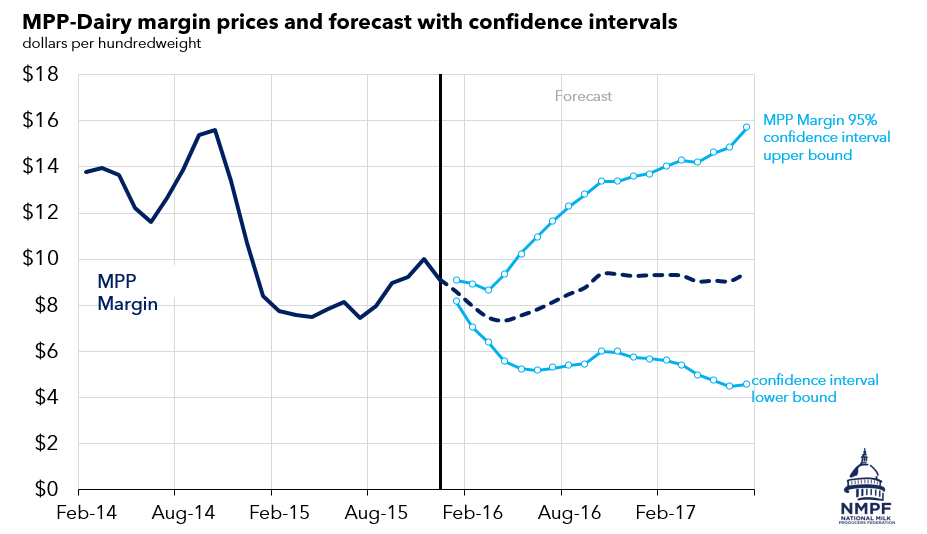Congress has returned to Washington from its summer recess for a brief period to work on the federal budget, before leaving Capitol Hill by the end of the month to campaign for the November elections. Also left behind will be a number of important policy items that remain the focus of NMPF – and which we’ll continue to push hard for action on, even if it means it will be 2017 before they can be addressed in earnest.
Congress is also likely to assemble in a lame-duck session after the November elections, but apart from a focus on annual spending matters, it doesn’t currently appear there is much momentum behind addressing many of the other major challenges facing the country. That said, we are having ongoing discussions with lawmakers about how important it is to dairy farmers that work continue on our list of priorities, whether yet in 2016, or in 2017 when a new Congress convenes. Here are a few of those key issues:
Immigration reform. Much has been said on the campaign trail this year about our nation’s immigration laws, but not much helpful or hopeful light has been shed on the subject. Despite the rhetoric, the fact remains that we have a serious mismatch between the supply of workers available to farming and agriculture, and the labor demand on dairy farms, orchards, nurseries, meat packing plants, and other places where much of the hard work wouldn’t get done without immigrant workers. Whoever is in the White House in January – and whoever controls the Senate and House next year – must make it a priority to address our labor situation, and a key piece of it is immigration policy reform that provides viable answers for agriculture’s labor needs. Any future solution needs to ensure an adequate, productive and competitive farm workforce, while also dealing with undocumented workers who are already here. The dairy sector, as well as much of the rest of agriculture and the larger U.S. business community, will be pushing for a constructive resolution of this issue after two decades of inaction.
The Trans-Pacific Partnership. Another hot topic in this year’s campaign, and ironically an issue where both Donald Trump and Hillary Clinton appear to find common ground, is the impact of trade agreements on growing our economy. Trade deals are always a mixed bag and, like all negotiations, they involve compromises. But in the case of the Trans-Pacific Partnership, contrary to the views of the White House aspirants, we would be better off with it in place. The U.S. government has spent five years negotiating the TPP, and it’s now up to Congress to vote it up or down. But delaying consideration of the deal, or voting against it, would reduce our opportunities to capture growing dairy markets in the Pacific Rim. The TPP isn’t perfect, and we have been clear that implementation of it must be carefully monitored and its provisions must be strictly enforced. But punting on the TPP is a serious mistake and would greatly reduce opportunities for increased access to overseas dairy markets that are growing faster than our own.
Child nutrition and the school lunch program. The reauthorization by Congress of the policies that govern our school lunch program is supposed to be an every-five-years’ event, and one that was to have been completed last year. After some positive momentum by both the House and Senate in 2016, however, the process has bogged down – meaning this also may be an issue that gets pushed into 2017. One important reason we need action here is because the pending nutrition bill would rectify a misguided policy that eliminated the ability of schools to offer flavored, 1 percent milk. Right now, only 1 percent white milk is allowed by USDA in schools – and any flavored milk must be fat-free. That restriction has reduced overall school milk consumption, and for that matter, student participation in the entire school lunch program. The reauthorization of the child nutrition act would change this situation for the better, but it remains hung up in both chambers. That logjam needs to be broken next year, if not this year.
Biogas recovery tax credit. Leaders in both the House and Senate have introduced identical measures that would expand existing renewable energy tax credits to farmers who invest in nutrient recovery technologies as well as manure digesters. The tax measure would create incentives to make biogas and manure resource recovery technologies more affordable, in the same way that tax incentives are used to stimulate investments in other energy sources. There is a slim possibility Congress might take up some tax relief measures after the November elections, but the more likely scenario is that we’ll have to push for this as part of a larger tax reform measure next year.
The Farm Bill and dairy’s safety net. The current farm bill, authorized in 2014, runs through 2018. But we are already in early discussions with members of Congress about ways to remedy some of the deficiencies in the Margin Protection Program, so that the key structural issues that need to be examined – including feed cost calculations, premium levels for supplemental coverage, and the margin thresholds for payouts – are addressed sooner rather than later. Our message to lawmakers is that the MPP is not completely fulfilling its objective as an effective safety net, and that means more work is needed.
Elections are about choices, and America’s voters will choose in just two months who will be in charge in Washington next year. But regardless of who’s in office, our task is to ensure that they devote the time and attention necessary to resolve these – and other — issues that are very important to dairy farmers. That work never ends.


 ARLINGTON, VA – The U.S. Dairy Export Council (USDEC) and the National Milk Producers Federation (NMPF) today praised Sens. Chuck Schumer (D-NY) and Tammy Baldwin (D-WI) for urging an investigation into Canadian dairy pricing policies that have impacted current trade and stand to negatively affect U.S. dairy farmers and manufacturers, jeopardizing the country’s trade commitment to the United States.
ARLINGTON, VA – The U.S. Dairy Export Council (USDEC) and the National Milk Producers Federation (NMPF) today praised Sens. Chuck Schumer (D-NY) and Tammy Baldwin (D-WI) for urging an investigation into Canadian dairy pricing policies that have impacted current trade and stand to negatively affect U.S. dairy farmers and manufacturers, jeopardizing the country’s trade commitment to the United States. As America’s dairy farmers endure the lowest milk prices since the Great Recession of 2009, the National Milk Producers Federation today asked the U.S. Department of Agriculture to provide a measure of relief by purchasing at least $100 million worth of cheese products for donation to the needy – a measure that would help both farmers, and food insecure Americans who patronize food banks.
As America’s dairy farmers endure the lowest milk prices since the Great Recession of 2009, the National Milk Producers Federation today asked the U.S. Department of Agriculture to provide a measure of relief by purchasing at least $100 million worth of cheese products for donation to the needy – a measure that would help both farmers, and food insecure Americans who patronize food banks.




